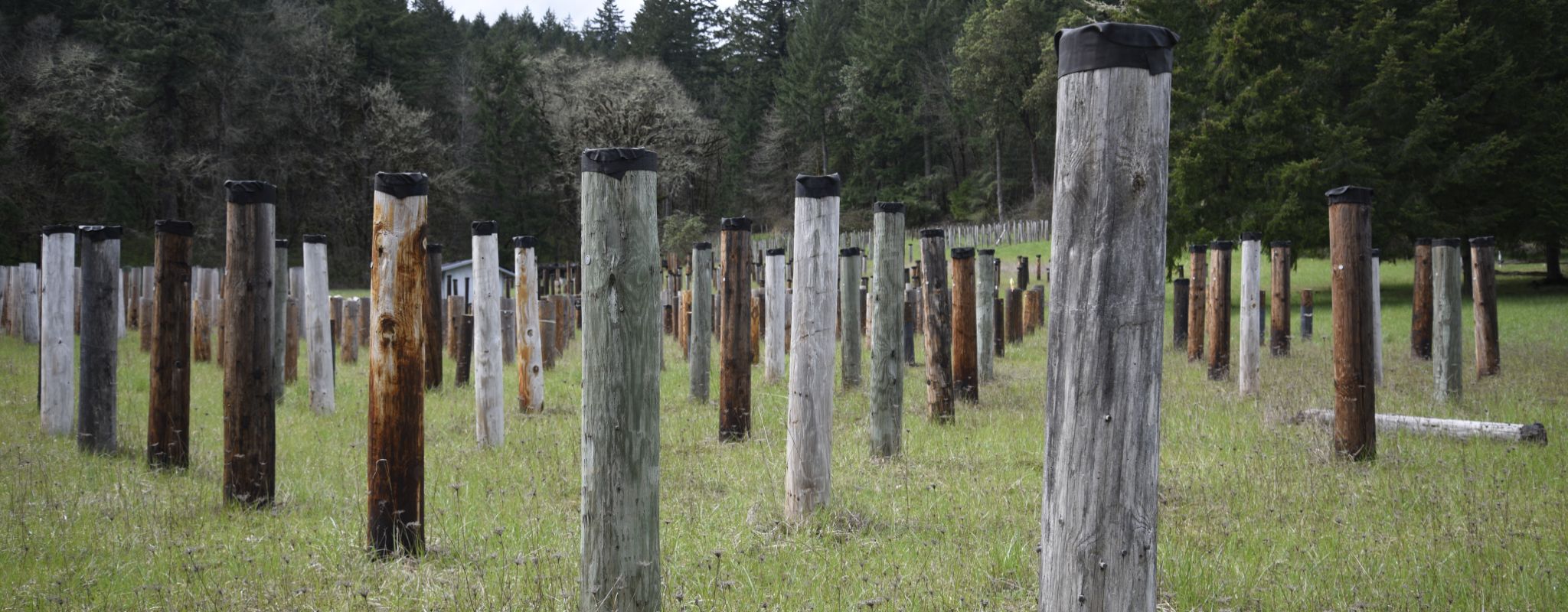Researchers: Gerald Presley, Jed E. Cappellazzi, Matthew Konkler
Study Objective: To reduce decay and insect damage, existing utility poles are treated with wood preserving chemicals. At the pole farm, researchers from OSU test different preservatives for their effectiveness, longevity, and environmental impact. This knowledge allows companies to use the least amount of chemical at the lowest frequency while obtaining optimal results. This research also informs climatic considerations, which vary by region and significantly affect how much preservative is needed to treat a pole. As you can imagine, a pole in rainy Western Oregon will need more protection than a pole in Oregon’s drier Eastern side. Because of their high value, we want them to last as long as possible.
Summary: The benefits are more widespread than you might think! In 1980, OSU formed the Utility Pole Research Cooperative, made up of utilities, chemical companies, wood treaters, and inspection agencies. As a third party member, OSU provides these groups with accurate, objective data to help them operate more effectively and efficiently. Consumers also benefit from reliable, long-lasting products. Using preservatives more efficiently helps reduce environmental exposure to chemicals, and the longer life of the pole reduces utility costs and the need to harvest trees.
Publications:
